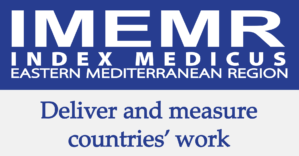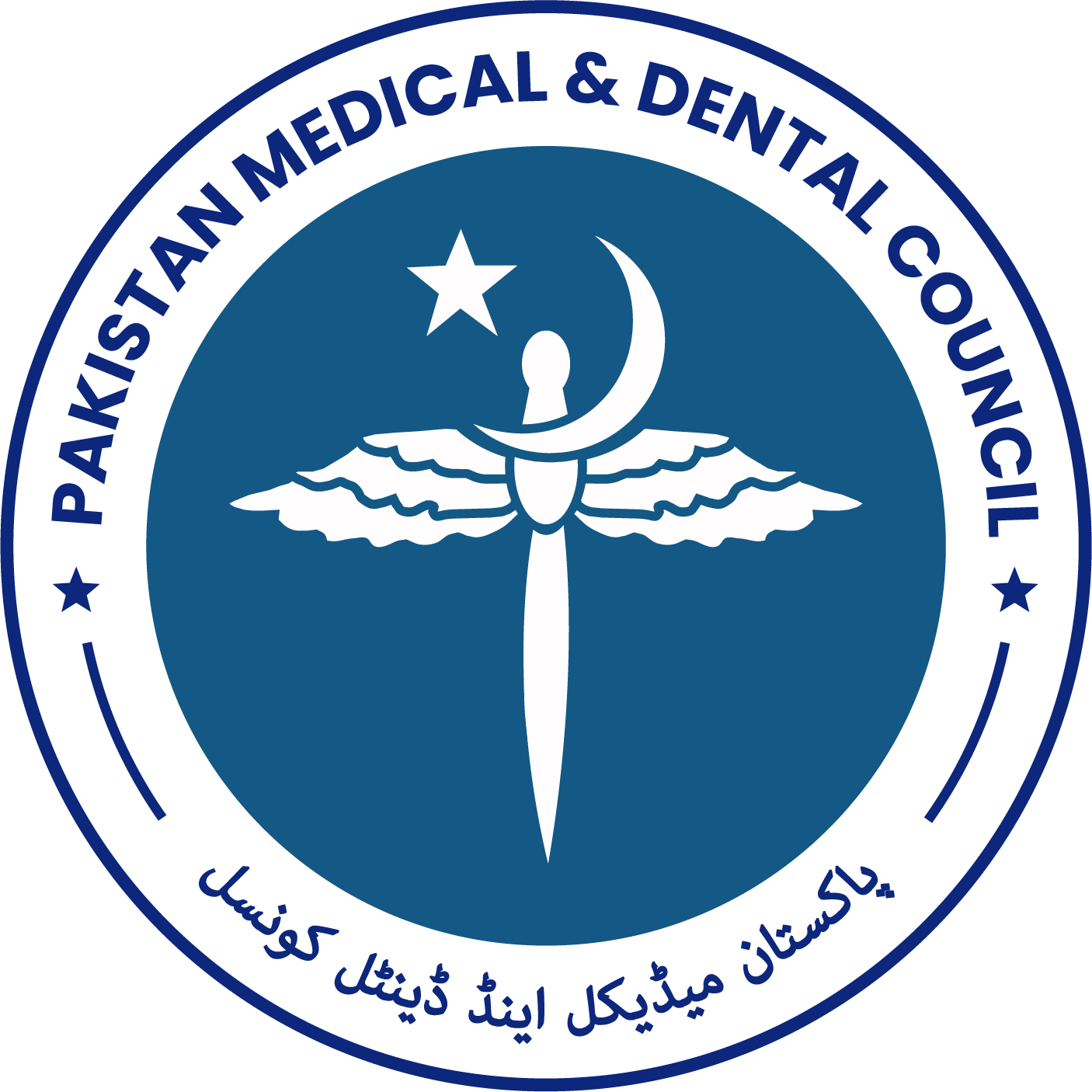Role of Trans Cerebellar Diameter for Gestational Age Estimation in Intrauterine Growth Restriction Fetuses
DOI:
https://doi.org/10.53685/jshmdc.v5i1.204Keywords:
Gestational age, Trans cerebellar diameter, Intrauterine growth restriction fetusesAbstract
Background: Determining gestational age is crucial for quality maternal and fetal care. Ultrasonographic measurements of femur length (FL), crown-rump length (CRL), head circumference (HC), and biparietal diameter (BPD) are used for gestational dating. However, these don't correlate well in Intrauterine growth restriction (IUGR) cases. Studies report that trans cerebellar diameter could be used for gestational age estimation in IUGR cases.
Objective: To find the correlation between trans cerebellar diameter and gestational age based on the last menstrual period (LMP) in intrauterine growth restriction fetuses.
Methods: It was a cross-sectional study. The data was collected from the Department of Obstetrics and Gynecology, Sir Ganga Ram Hospital Lahore from 20 February 2022 to August 2022. After informed consent 60 women aged 18-40 years and parity <5 with suspected Intrauterine growth restriction (IUGR) were included in the study. Gestational age was determined from the LMP while trans cerebellar diameter was by Ultrasonography. The correlation between gestational age and trans cerebellar diameter was determined and compared across subgroups of the study population based on age, parity, and BMI.
Results: The mean age of the study participants was 25.6±6.3 years. The majority of the women were primiparous. The mean BMI was 27.8±3.4 Kg/m2. The mean gestational age was 33.35±2.25 weeks. Trans cerebellar diameter range was 36.3 mm to 49.6 mm. A significant correlation was found between gestation age and trans cerebellar diameter (r=0.979, p-value<0.001) in subgroups based on age, parity, and BMI.
Conclusion: A significant positive correlation was observed between Trans cerebellar diameter and gestational age among women with IUGR suggesting its routine use in estimating gestational age among high-risk obstetric care patients
References
Priante E, Verlato G, Giordano G, Stocchero M, Visentin S, Mardegan V, et al. Intrauterine growth restriction: new insight from the metabolomic approach. Metabolites. 2019; 9(11):267. doi:10.3390/metabo9110267. DOI: https://doi.org/10.3390/metabo9110267
Menendz-Castro C, Rascher W, Hartner A. Intrauterin growth restriction- impact on cardiovascular diseases later in life. Mol Cell Pediatr. 2018; 5(1):4. doi: 10.1186/s40348-018-0082-5. DOI: https://doi.org/10.1186/s40348-018-0082-5
Nagaraju RM, Bhat V, Gowda PV. Efficacy of transcerebellar diameter/abdominal circumference versus head circumference/abdominal circumference in predicting asymmetric intrauterine growth retardation. J Clin Diagn Res. 2015; 9(10): TC01-TC05. doi:10.7860/JCDR/2015/14079.6554. DOI: https://doi.org/10.7860/JCDR/2015/14079.6554
Legrand M, Elie C, Stefani J, N Florès, Culeux C, Delissen O, et al. Cell proliferation and cell death are disturbed during prenatal and postnatal brain development after uranium exposure. Neurotoxicology. 2016; 52: 34-45. doi:10.1016/j.neuro.2015.10.007. DOI: https://doi.org/10.1016/j.neuro.2015.10.007
Mierzyński R, Dłuski D, Darmochwał-Kolarz D, Poniedziałek-Czajkowska E, Leszczyńska-Gorzelak B, Kimber-Trojnar Z, et al. Intrauterine Growth Retardation as a Risk Factor of Postnatal Metabolic Disorders. Curr Pharm Biotechnol. 2016;17(7): 587-596. doi:10.2174/1389201017666160301104323. DOI: https://doi.org/10.2174/1389201017666160301104323
Fleiss B, Wong F, Brownfoot F, Shearer IK, Baud O, Walker DW, et al. Knowledge Gaps and Emerging Research Areas in Intrauterine Growth Restriction Associated Brain Injury. Front Endocrinol (Lausanne). 2019; 10: 188. doi:10.3389/fendo.2019.00188. DOI: https://doi.org/10.3389/fendo.2019.00188
Dashottar S, Senger KP, Shukla Y, Singh A, Sharma S. Transcerebellar diameter: an effective tool in predicting gestational age in normal and IUGR pregnancy. Int J Reprod Contracept Obstet Gynecol. 2018; 7(10): 4190-4196.doi:10.18203/2320-1770.ijrcog20184150 DOI: https://doi.org/10.18203/2320-1770.ijrcog20184150
Sersam LW, Findakly SB, Fleeh NH. Fetal Tran’s cerebellar diameter in estimating gestational age in the third trimester of pregnancy. J Res Med Dent Sci. 2019; 7(5):60-66.
Alalfy M, Idris O, Gaafar H, Saad H, Nagy O, Lasheen Y, et al. The value of fetal Tran’s cerebellar diameter in detecting GA in different fetal growth patterns in Egyptian fetuses. Imaging Med. 2017; 9(5):131-138.
Whitworth M, Bricker L, Mullan C. Ultrasound for fetal assessment in early pregnancy. Cochrane Database System Rev. 2015; 2015(7): CD007058. doi: 10.1002/14 651858.CD007058.pub3. DOI: https://doi.org/10.1002/14651858.CD007058.pub3
Committee Opinion No 700: Methods for Estimating the Due Date. Obstet Gynecol. 2017; 129(5): e150-e154. doi:10.1097/AOG.0000000000002046. DOI: https://doi.org/10.1097/AOG.0000000000002046
Muhammad T, Khattak AA, Shafiq-ur-Rehman, Khan MA, Khan A, Khan MA. Maternal factors associated with intrauterine growth restriction. J Ayub Med Coll Abbottabad. 2010; 22(4): 64-69.
Fatima K, Shahid R, Virk A. Determination of mean fetal Tran’s cerebellar diameter as a predictive biometric parameter in the third trimester of pregnancy in correlation with fetal gestational age. Pak Armed Forces Med J. 2017; 67(1): 155-160
Jha A, Joshi B, Pradhan S. Fetal Transcerebellar Diameter/ Abdominal Circumference Ratio as a Gestational Age Independent Parameter for Fetal Growth. Nepal J Obstet Gynaecol. 2014; 9(2): 79-82. DOI: https://doi.org/10.3126/njog.v9i2.11770
Mishra S, Ghatak S, Singh P, Agrawal D, Garg P. Transverse cerebellar diameter: a reliable predictor of gestational age. Afr Health Sci. 2020; 20(4): 1927-1932. doi:10.4314/ahs.v20i4.51.
Ravindernath ML, Mahender R, Nihar R. Accuracy of transverse cerebellar diameter measurement by ultrasonography in the evaluation of fetal age. Int J Adv. Med. 2017; 4(3): 836-841.doi:10.18203/2349-3933.ijam20172281
R Nagesh, Seetha Pramila VV, Anil Kumar Shukla. Transverse cerebellar diameter – an ultrasonographic parameter for estimation of fetal gestational age. IJCMR. 2016; 3(4): 1029-1031.
Eze CU, Onwuzu QE, Nwadike IU. Sonographic reference values for fetal transverse cerebellar diameter in the second and third trimesters in a Nigerian population. J Diagn Med Solography. 2017; 33(3): 174-181. doi:10.1177/8756479316687997 DOI: https://doi.org/10.1177/8756479316687997
Singh J, Thukral CL, Singh P, Pahwa S, Choudhary G. Utility of sonographic transcerebellar diameter in the assessment of gestational age in normal and intrauterine growth-retarded fetuses. Niger J Clin Pract. 2022; 25(2): 167-172. doi:10.4103/n jcp.njcp_594_20. DOI: https://doi.org/10.4103/njcp.njcp_594_20
Neha Patial, Jhobta A, Kapila S. Assessment of correlation between Tran’s cerebellar diameter and gestational age in IUGR pregnancies. IAR J Med Sci. 2022; 3(1): 70-74. doi:10.47310/ijme.2022.v03i01. DOI: https://doi.org/10.47310/iarjms.2022.v03i01.016
Reddy RH, Prashanth K, Ajit M. Significance of fetal transcerebellar diameter in fetal biometry: a pilot study. J Clin Diagn Res. 2017;11(6): TC01-TC04. doi:10.7860/JCDR/2017/23583.9968. DOI: https://doi.org/10.7860/JCDR/2017/23583.9968
Mishra S, Ghatak S, Singh P, Agrawal D, Garg P. Transverse cerebellar diameter: a reliable predictor of gestational age. Afr Health Sci. 2020; 20(4): 1927-1932. doi: 10.4314/ahs.v20i4.51. DOI: https://doi.org/10.4314/ahs.v20i4.51
Ravindernath ML, Mahender R, Nihar R. Accuracy of transverse cerebellar diameter measurement by ultrasonography in the evaluation of fetal age. Int J Adv Med. 2017; 4(3): 836-841. DOI: https://doi.org/10.18203/2349-3933.ijam20172281
Downloads
Published
How to Cite
Issue
Section
License
Copyright (c) 2024 Dr Rukhsana Babar

This work is licensed under a Creative Commons Attribution-NonCommercial 4.0 International License.
You are free to:
- Share — copy and redistribute the material in any medium or format
- Adapt — remix, transform, and build upon the material
- The licensor cannot revoke these freedoms as long as you follow the license terms.
Under the following terms:
-
Attribution — You must give appropriate credit, provide a link to the license, and indicate if changes were made. You may do so in any reasonable manner, but not in any way that suggests the licensor endorses you or your use.
-
Non Commercial — You may not use the material for commercial purposes.
-
No additional restrictions — You may not apply legal terms or technological measures that legally restrict others from doing anything the license permits.




















